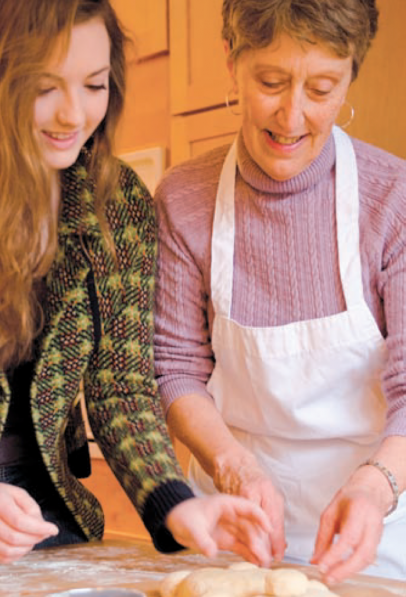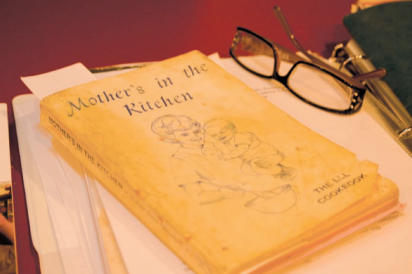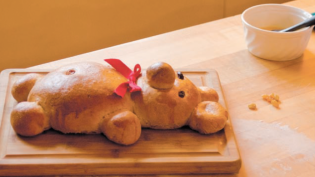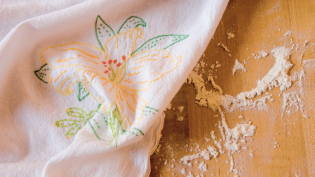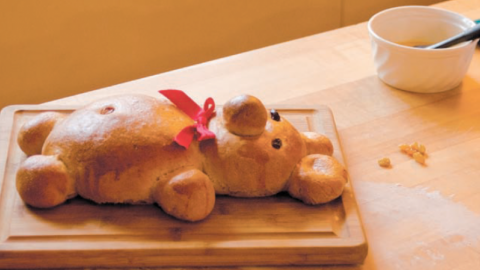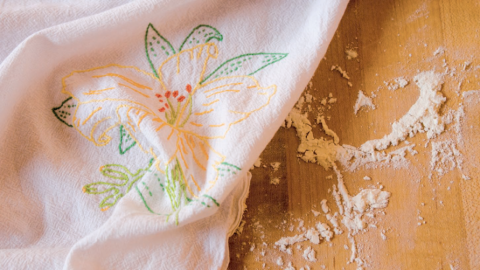Home Cooking With... Ellie Taylor
Ellie Taylor answers the door wearing fuzzy purple slippers. For this, and the smell in her kitchen, we promptly love her.
We aren’t the only ones. Ellie’s high school granddaughter Helen works alongside her grandmother, rolling dough into spheres so quickly I can hardly tell which set of hands belongs to which generation. Helen, wearing just socks on her feet, forms the balls of dough into the shape of a teddy bear that will puff into friendly “bear bread” when baked. As I help assemble the second bear, Ellie retrieves the warm one from the oven, a giddy grin on her face. “It’s just such a wonderful moment!” she exclaims. “He is birthed! What is his name going to be?” She scampers off to fetch the petite red bow that will become his bowtie.
Meanwhile, Helen shows me an aged photograph of her with her sister Zoe when the girls are two and six years old. In the photograph, the sisters prop their elbows on the very same dining table we stand around now, and just like us, they are making bear bread. Everything in Ellie’s kitchen has history, not just the recipes. The butcher-block dining table in the center of her home has been in their family for 35 years, she’s had the same white KitchenAid mixer for 50 years, and her oven, in which “something has recently exploded,” has baked countless loaves.
Ellie began cooking with her mother in their childhood kitchen, but her interest in nutrition grew when she was pregnant with her own first child. What began as a desire to give her children the healthiest beginnings evolved into a master's in Nutrition and a job directing the Wellness Center at Clemson University. Ellie is passionate about cooking healthy foods, so she adjusts almost every recipe, substituting whole wheat, cutting the sugar, or tossing in kale. (“Way before it was a fad,” she assures me.) Her cooking grew out of her love for eating, and she believes healthy foods can taste “fabulous.”
This enthusiasm has rubbed off on her children and grandchildren, who have each developed their own unique cooking processes. (One son apparently puts ginger in everything and suffered “a long Jell-O phase.”) Ellie co-authored Feeding the Kids with her daughter Pamela, who has a master’s in public health with a concentration in nutrition. As “the most appreciative eater,” Ellie’s husband is the one who truly makes it a joy to cook.
According to Ellie, even more important than meeting every standard for local and organic is cooking at home. She cites the lack of unnecessary processing, but as I watch her interact with her granddaughter I can observe other reasons for staying close to the home kitchen. Cooking is clearly vital to the daily life of this family.
Zoe joins her sister Helen at the table, and the granddaughters share some of the cooking stories that have come to define this tribe: a failed attempt at churning ice cream in a garbage bag in the ocean while on vacation, the chocolate stripes that decorated Ellie’s ceiling when the family thought centrifugal force might make chocolate rise to the top. In this family, food preparation is an act of devotion.
We stare at the armless, earless bear we’ve left behind. “He looks so sad now,” Ellie says. And it might have been a sad moment except for this: we remember there’s another bear waiting in the oven, and a hundred more still to bake.


